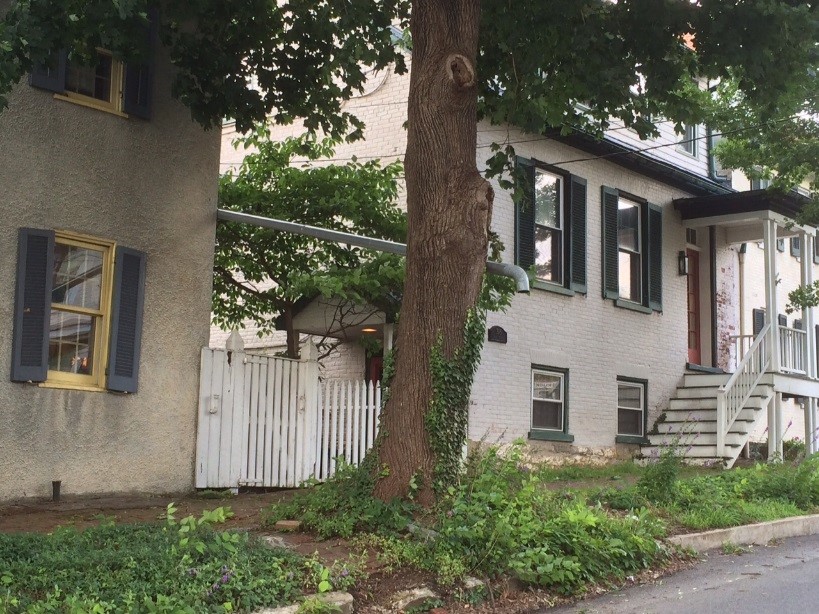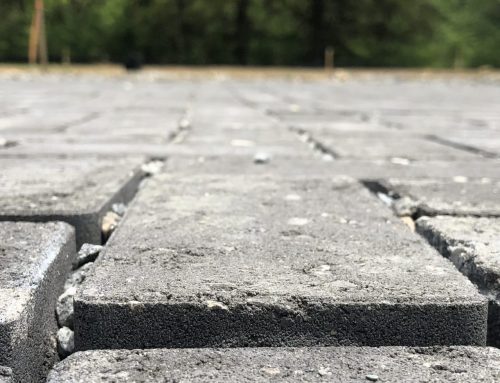Fall 2015 marked the end of a somewhat dynamic project. It was a rewarding project, and a successful project, but it turned into a moving target at a certain point, and really did not settle down until we called “cut!” from the director’s chair. The portion of the larger scope that we worked so hard to steer in a straight line was composing and developing an information and installation manual for residential and small commercial scale BMPs for our client, the Anne Arundel Watershed Stewards Academy (WSA).
The Maryland Stormwater Design Manual is about 600 pages of dense specifications, with little in the way of graphics. The specifications for BMPs are geared toward engineers. The WSA wanted manuals for homeowners, Watershed Stewards, and commercial landscape contractors – all people who might be installing small-scale BMPs on private property, and wouldn’t find much value in the Maryland Manual due to its complexity and intimidating size. The reason “standards” is in quotation marks in the title is because the Maryland Manual doesn’t cover everything in the Watershed Stewards Academy Rainscaping Manual, such as Conservation Landscapes and Rain Gardens, and some practice specifications needed to be partially redefined with the audience in mind.
Initially the plan was to develop two manuals, each aimed at separate audiences – homeowners for one, and landscape contractors for the other – but the more complex of the two ended up commandeering enough of our time that we ended up consolidating the two manuals into one, allowing our client to thin the manual at a later date by pulling out some of the higher level detail. The manual covers project complexity, location and feasibility, design, materials, construction, maintenance, and additional resources and references for the following six small-scale practices:
- Conservation Landscapes
2. Rain Gardens
3. Permeable Hardscapes
4. Infiltration Practices
5. Rainwater Harvesting
6. Green Roofs (not nearly as common as the others, but still appropriate for the scale)
The aim was to make the end product as graphically engaging, easy to follow, and thorough as possible, while not overwhelming the audience(s). The verbal content of the manual was only tricky due to the necessary combination of appropriate technical depth and specificity, and “digestible” language. In other words, the manual had to present somewhat non-readable content in a readable format. With several people simultaneously authoring different portions of the manual, and many people representing several different organizations and backgrounds reviewing the drafts and providing comments, the dynamism mentioned in the first paragraph could also have been jovially described as “chaos.”
Just as there may be a thousand ways to say any one thing, similarly, there can be a thousand ways to visually represent something, none of them wrong, but only one of them ideal, and even that one is potentially ideal for only one reader/onlooker. To make a long story short, after many cycles of review and revision, creation of some original graphics, and some fundamentally important graphic material donations from the Washington State Department of Ecology, we managed to get a product out the door which suited our clients, and which will likely see a great deal of use; that Rainscaping manual also became the technical content for the Alliance for the Chesapeake Bay’s RiverWise Manual (for similar audiences), giving it greater geographic reach than its intended Anne Arundel County audience. To complement the manual, there was also a Conservation Landscape design tool, a quick reference guide for the six practices, a pollutant removal calculator for Anne Arundel County residential BMPs, and a few other odds and ends including one in-the-ground infiltration practice. All of these can be found in the Resources section of the Watershed Stewards Academy website.
The Watershed Stewards Academy Rainscaping Manual can be found in its finished form here.
We’re pleased with the results and the feedback we’ve gotten so far. If you’d like more information about the manual or other products resulting from this collaboration, contact Ari Daniels at add@cwp.org.
Water Resources Engineer
Ari has lived in Falls Church and Charlottesville, Virginia, and also (including most recently) Portland, Oregon. A lover of all things outdoors, he especially loves the water. Starting in July, 2014, he brings various types of work and life experience to the Center, including construction and project management, non-profit administration, environmental activism, outdoor adventure leading, teaching, and a seemingly random assortment of others. He earned a B.S. in Civil and Environmental Engineering from the University of Virginia. In his free time, he enjoys biking, kayaking, climbing, and writing.











